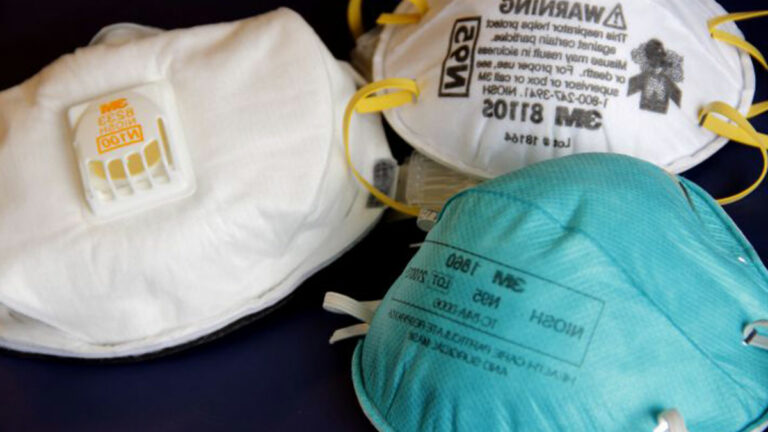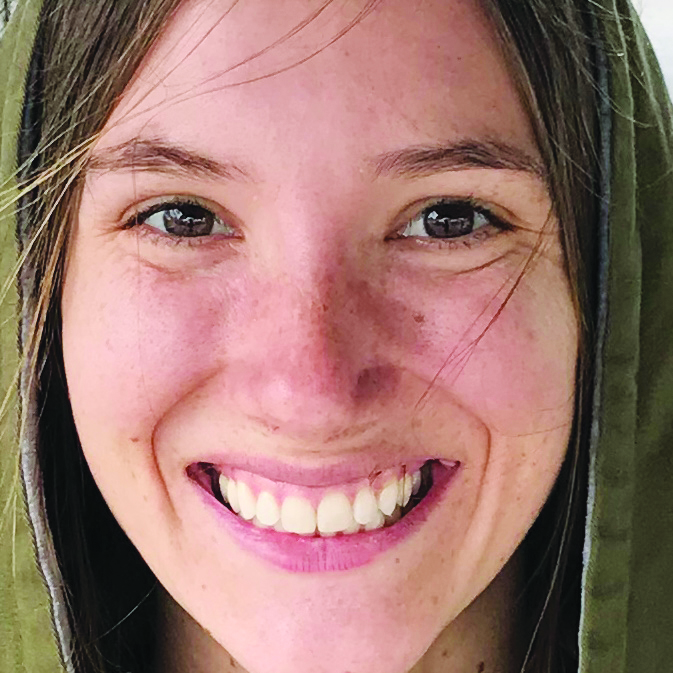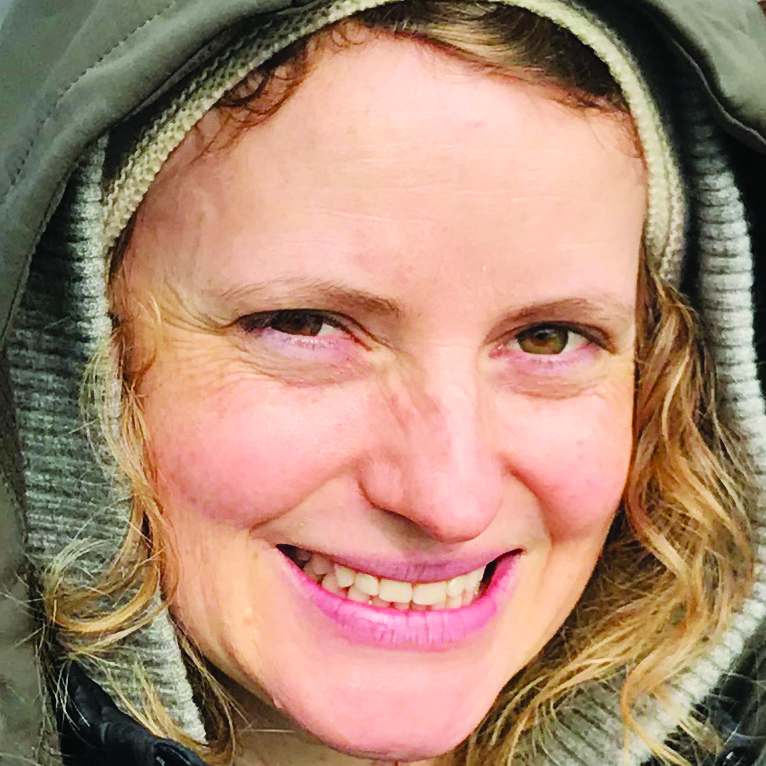Face masks are what everyone wants to be wearing this season. Toilet paper (even single ply!) has vanished from shelves across the nation. And the legend of the once-scoffed-at hand sanitizer grows daily.
Is cannabis next?
“There’s a weird mass hysteria going on now,” Cole Hembree, owner of Curbstone Exchange, tells GT. “In the wake of the shelter-in-place order, we literally doubled our numbers. People are freaking out about COVID-19 and ordering more—in a stockpile-type scenario. We’re doubling our orders from all of our vendors just to keep up with demand.”
Curbstone, known affectionately as “The Curb” by the cannabis dispensary’s regulars living in and around the Felton area, has been doing record-breaking business this month.
“People are getting freaking nuts,” Hembree says. “We’re seeing everyone stocking up. Even the people who’ve been with us for a long time. They are buying more than usual. People are buying the same things they usually do, just way more of them.”
It’s not just Curbstone that has been inundated by new (and old) customers. Demand is spiking, and shockingly strong, at dispensaries across Santa Cruz County, California, and the entire nation. Weed shops in Oregon, Washington, Colorado, and Alaska have reported huge numbers and substantial jumps in recent sales, new customers, and order amounts. On Wall Street, large and small cap stocks are being lifted skyward on a flurry of positive headlines and newfound enthusiasm for all things green.
It’s been a little over two years since weed began to go legal across the state of California. To date, commercial cannabis sales have raised more than $1 billion in taxes. The recreational cannabis market—one that was launched to much fanfare and with sky-high expectations—got big quickly, but never quite reached the level that many had predicted. Brutal competition between the legal cannabis industry and the thriving black market has contributed to semi-sluggish recent growth and the oversaturation of some key markets.
But now, thanks to the coronavirus, the Golden State is experiencing a cannabis resurgence. A new wave of enthusiasm has taken over the cannasphere, and some in the weed biz are going so far as to declare a second “Green Rush.” California dispensaries have reported record growth in recent weeks—in some cases, numbers not unlike the first day of recreational sales. Some are ordering more product and increasing their inventory, hiring additional delivery drivers, and even hiring new employees.
“We’re killing it,” says Bruce Valentine, a budtender at the Santa Cruz Veterans Alliance (SCVA), earlier this month.
The SCVA has been slinging what they call the “highest-quality, lab-tested medical cannabis in existence” to ex-servicemen and the general public in the Santa Cruz area since 2011. In its almost decade-long existence, the dispensary has never experienced this kind of business.
The Centers for Disease Control and Prevention may have inadvertently encouraged this new boom by strongly recommending the general public have at least a month’s supply of their medication. For cannabis patients, who smoke an average of a gram of flower each day, that’s around an ounce—costing anywhere between $200 for “schwag” to $400 for “top shelf” cannabis.
“People who are coming into the shop are definitely stocking up,” Valentine says. “Just like with water and soap. There definitely has been consistent traffic throughout the day. Roughly the same amount of customers, just buying way more. Some people come in with gloves and masks on. It’s a huge change.”
While panic buying of cannabis has subsided a bit since early March, demand remains strong.
This is the first real crisis and economic downturn the United States has experienced in the age of legalized cannabis. Even in the face of widespread unrest and uncertainty, many involved in the local and California cannabis space are sanguine about the future. Marijuana is widely believed to be “recession proof,” and like other “vice industries” (including alcohol and tobacco), should be equipped to weather difficult times of crisis and economic uncertainty quite well.
EVERYTHING HAS CHANGED
On Thursday, March 19, Gov. Gavin Newsom issued a sweeping COVID-19 shelter-in-place order for California’s residents. To mitigate exposure to the coronavirus, and to curb the spread of the pandemic, only vital and “essential” businesses (or service providers)—like grocery stores, gas stations, banks, pharmacies and media—were allowed to continue daily operations.
It wasn’t immediately clear how the shelter-in-place order would affect cannabis dispensaries, or the cannabis industry as a whole. As officials rushed to interpret what really constitutes an “essential” business in counties across the Bay Area, dispensaries found themselves in a tense state of limbo. Because dispensaries serve both medical and recreational clients, there was ample room for interpretation.
“It was confusing at first,” says a budtender at Ben Lomond’s Central Coast Wellness Center dispensary. “We were closed for two days trying to figure out what was legal and not. There was a lot of anxiety about the situation.”
On March 16, San Franciscans woke up to the news that the Department of Health had declared: “Cannabis dispensaries and cannabis delivery services are not essential businesses.” The announcement concerning the imminent closure starting March 17 of all San Francisco dispensaries caused widespread public backlash, minor panic, mob-like hoarding of cannabis, and block-long lines. Mayor London Breed quickly caved to immense public pressure and deemed cannabis essential with medical use. Today, San Francisco cannabis shops are busier than ever, and the San Francisco-based delivery service Eaze had its number of first-time deliveries and website sign-ups double almost overnight.
In Santa Cruz County, which boasts the 25th most dispensaries per capita in the nation, the Health Services Agency was quick to deem cannabis dispensaries essential public services. The HSA decreed that local pot shops could in fact continue to serve clients—but with some game-changing, and rather disruptive, caveats.
BACK AND FORTH
Trying to keep up with the current rules for cannabis can be dizzying for consumers and dispensaries alike.
“It’s reinventing the wheel for us,” says Surf City Original owner Kevin Watts. “On a weekly basis.”
Following the March 16 shelter-in-place order in Santa Cruz County, officials decreed that customers could no longer enter the physical premises of any and all dispensaries, or “congregate or gather in a store.”
“We made a local decision to allow our cannabis businesses to continue operations while also trying to minimize contact,” writes Deputy County Administrative Officer Melodye Serino in an email to GT. “We are all in a very fluid and dynamic environment that calls for adaptive leadership at all levels in our community.”
To abide by the state’s social-distancing recommendations (a.k.a. the six-foot-rule) and to ensure the safety of workers and customers, the HSA instructed local dispensaries to immediately begin conducting sales through curbside pickup or delivery only.
Santa Cruz County cannabis retailers had to adapt almost overnight and dramatically change the way they conduct daily business.
With curbside ordering, customers place their orders online or over the phone, and a dispensary employee meets them outside the shop with their cannabis and takes their payment. No browsing, perusing, smelling, handling, or in-depth consulting is involved.
County officials told local cannabis shops that they could only keep operating if they adhered to a laundry list of provisions, including rigid anti-congregation and social-distancing protocols, and ensuring that outside cannabis transactions occur under video surveillance or security officer supervision.
Khalil Moutawakkil, CEO of KindPeoples, the county’s largest and first state-legal dispensary, says he doesn’t blame county officials, but he’d like to see them treat his business the same way they treat the area’s other retail businesses.
“The County of Santa Cruz deemed us to be ‘essential,’ but with additional restrictions that are not imposed on other retail businesses, like grocery stores or liquor stores,” Moutawakkil tells GT. “We feel blessed to remain open during this time of crisis, but we’d like to see some consistency.”
For 10 days under the curbside directive, business was good, customers seemed happy and more comfortable, and things were running smoothly. Then everything changed again—just over a week after Serino and Cannabis Licensing Manager Sam Loforti ordered all local dispensaries to conduct their business outside, they ordered them back in. To “minimize contact” and adhere to “required security considerations,” Serino, Loforti, and the county announced that cannabis retailers would have to return to indoor sales by Saturday, March 28.
“During inspections, our staff have seen violations including large congregations out front of retail spaces—with no social distancing protocols being monitored or managed, awnings erected outside which may not allow for security surveillance, and even an ATM machine outside creating all kinds of security risks,” Serino wrote in a letter to local dispensaries.
Dispensaries were given mere days to move their operations back indoors and completely overhaul the way they conduct their daily business—again.
“The County was flip-flopping. We’ve had some huge ups and downs,” Moutawakkil says. “They made their decision and we had to come up with a whole new set of procedures to conduct our business overnight. All dispensaries are navigating very unique situations right now.”
WAIT AND SEE
After the County’s inspections, some dispensaries were able to keep doing curbside sales depending on their indoor space, available space for line control and management, and the availability of security and staff.
“We evaluated businesses on a site specific basis to assess if curbside options could continue,” Serino writes. “These are stressful times and there are bound to be stumbles as we make decisions in a constantly changing environment.”
Serino and Loforti carried out inspections at most cannabis retailers at the end of last week. The duo worked with local dispensaries to figure out best available options for each unique situation.
“We heard a lot of people wanted a curbside option, and almost half of the dispensaries in the county will continue to do curbside in the future. But it will be different for each dispensary,” Serino explains. “Some will use ‘walk-up’ windows or ‘drive-through’ windows. If moving operations outside, security cameras must capture transactions and personnel should be outside to adhere to social distancing policies.”
The rest of Santa Cruz County’s dispensaries—with no curbside delivery service—will allow clients into their interior spaces for brief consultations and transactions on a very limited basis. To adhere to strict social distancing protocols, shops with smaller physical spaces can allow one or two customers inside at a time. Those with more physical space can allow more people inside, around three or four.
In the near future, Moutawakkil foresees local dispensaries choosing to operate in a multitude of different ways. Some, he predicts, will try to use a hybrid model—doing some brief consultations outside, but checking out customers within a store’s interior walls.
STAYING CLEAN
In light of the new HSA mandates, local dispensaries are doing all they can to ease the minds of their customers and to mitigate the risk of spreading COVID-19.
Treehouse budtender Jeremy Skiscim says that his dispensary has “a six-foot policy for any customer/budtender interactions—which we are trying to limit altogether. All of our crew is wearing sanitary nitrile exam gloves. Our store managers called the County Health Department and asked them for things we could (and should) do to keep our clients and employees safe. We have strict S.O.P.s [Standard Operating Procedures]. Everything employees and customers might touch is wiped down constantly.”
Other local dispensaries are taking similar precautions to ensure customer and employee safety—and going way beyond gloves and masks. Many have created floor markers to ensure sixs-foot separation between customers, installed hand-sanitizing stations near doors and cash registers, increased the time and frequency of employee hand washing, installed HEPA air filtration systems, and some go so far as to measure the temperatures of their employees before each shift.
“We’re being vigilant. We have to be,” Hembree says.
In the pre-COVID-19 days, Treehouse Dispensary’s 4,000 square feet functioned as a vibrant community hub. “We have the space to unite the Santa Cruz County cannabis community. Our regular events and offerings are focused on wellness and bringing people together,” says Treehouse marketing director Jessica Grace.
Customers who walked under the “All are Welcome” sign at Treehouse were greeted with plush couches, live plants, upbeat (sometimes live) music, and a casual lounge atmosphere. The carefully designed space always begged the dispensary’s regulars to linger, socialize, rub elbows with artists and other eclectic characters, maybe buy a drink or an edible, and just chill.
Today, business is being conducted in the parking lot. The cavernous, but always warm and inviting, confines of Treehouse are dark and eerily quiet. At most shops, there’s little time right now for the in-depth one-on-one consultations with budtenders for which local dispensaries have become known.
“For all of our customers, the quicker we can get them in and out of our lot with their product the better it is for everyone,” Skiscim says.
Most local dispensaries offer—and recommend—online express ordering. Some cannabis retailers also support ordering by phone, and a few allow for in-person/on-site orders as well. With the current, in-flux model of doing business, many dispensaries will only accept cash.
ANOTHER OPTION
For those who can’t or don’t want to visit a brick-and-mortar dispensary right now, there’s one other option: delivery.
As of this month, Weedmaps lists a handful of delivery companies operating in the Santa Cruz area, but there are only four dispensaries that are licensed by the county: Curbstone Exchange, 3 Bros Santa Cruz, Santa Cruz Naturals and Surf City Original.
“The delivery license was a hard one to get,” Hembree says. “A lot of local dispensaries did not go after it. We proudly cover the entire Santa Cruz County. We’re one of the only ones delivering cannabis now. You spend $50 or more and we come out.”
Throughout March, Curbstone Exchange has been inundated with delivery requests. Hembree’s fleet of 3 delivery vehicles, and his team of dispatch operators are in constant motion, packaging and fulfilling orders throughout the county.
“Deliveries have been full every day. We’ve had to schedule deliveries for the next day. It’s not like you can’t get a delivery, but you may have to wait a little,” Hembree says.
3 Bros Santa Cruz has seen an explosion in delivery requests. In fact, until this week, 3 Bros had no designated full-time delivery drivers. But things are changing fast for the laid-back and Westside shop with the motto “Good Vibes, High Tides.”
“We’re doing more business than ever—close to 50 deliveries a day,” says 3 Bros budtender Michelle. “Demand keeps getting higher. Way more than before. Things are a bit better now that we have someone just doing deliveries. We need more time for deliveries though. We’re backed up.”
Click here for a guide to how every Santa Cruz dispensary is operating in the wake of the shelter-in-place mandate.
For continuing in-depth coverage of the new coronavirus and its effects locally, visit goodtimes.sc/category/santa-cruz-news/coronavirus.
To learn about action you can take now, whether you’re seeking assistance or want to find ways of supporting the community, visit goodtimes.sc/santa-cruz-coronavirus-resources.































